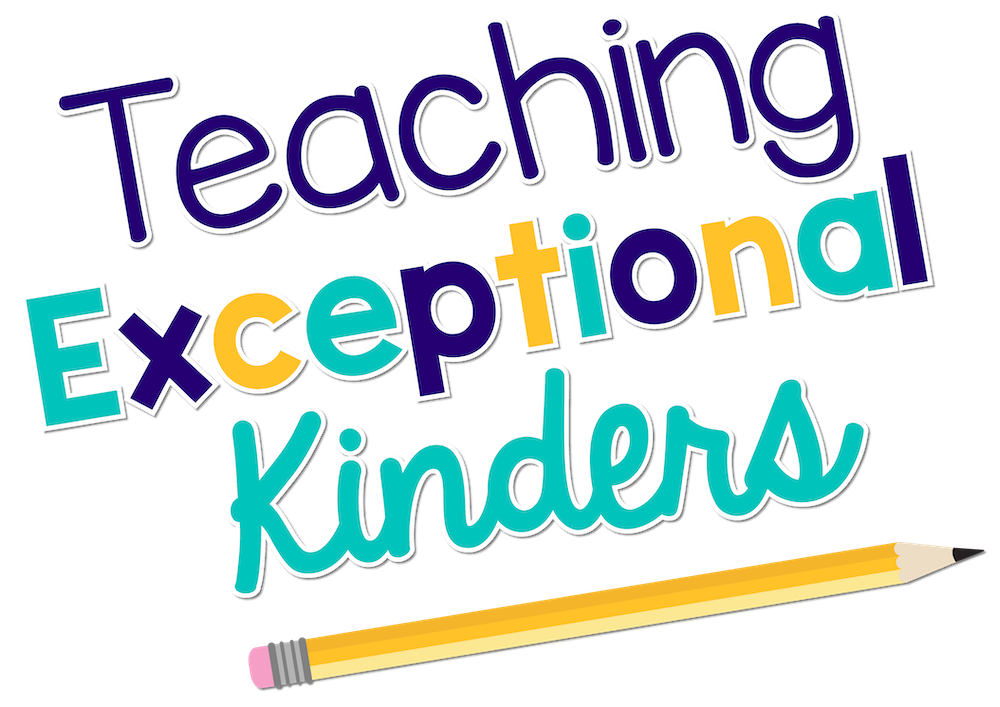Tips for Building Relationships with Parents and Families
A strong school-home connection can enhance a child’s kindergarten experience. Parents are more involved in what happens at school, teachers can more actively communicate student needs, and together they can troubleshoot issues that arise. However, this strong connection doesn’t happen overnight! In this post, I’m sharing tips for building relationships with parents and families for a successful kindergarten year.
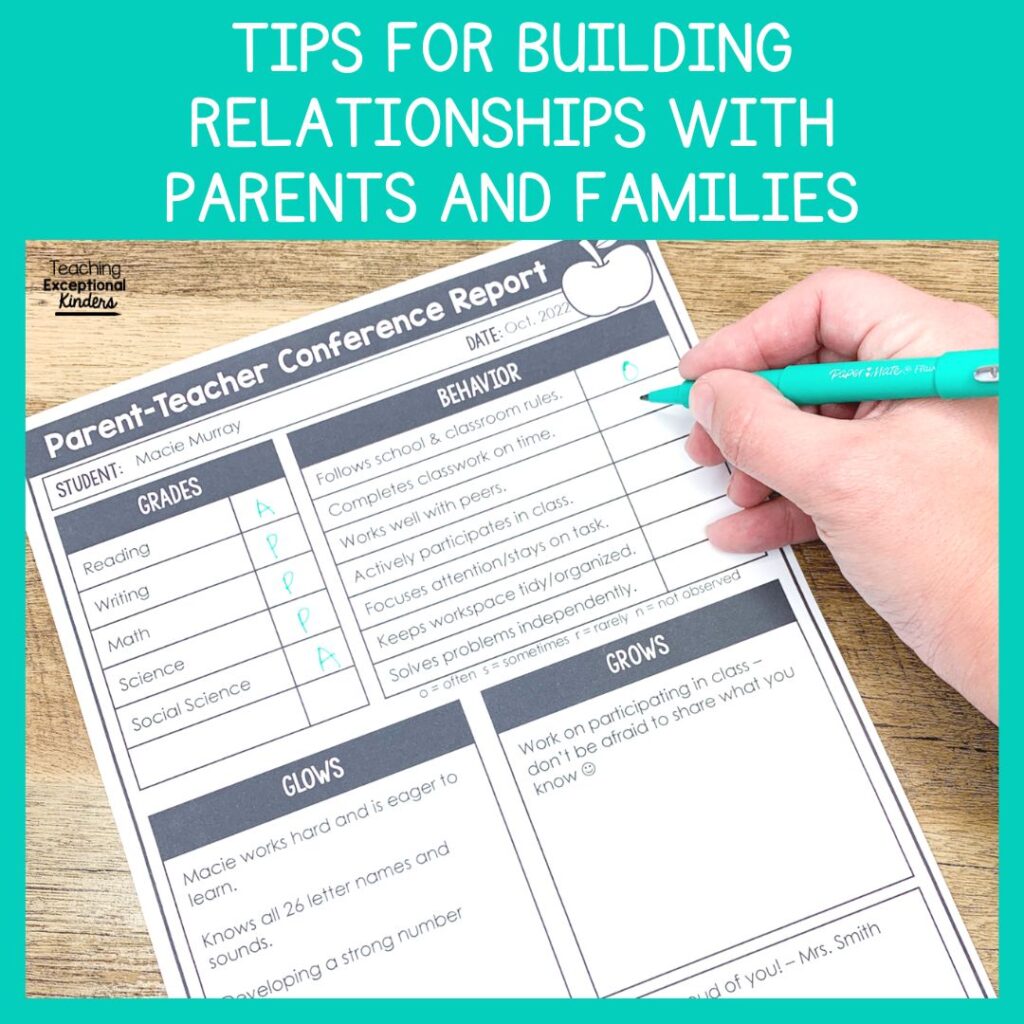
6 Tips for Building Relationships with Parents and Families
I have shared before that relationships are at the heart of classroom management. You can’t help your students with their behavior if you don’t have individual relationships with them. The same holds true with families! You can’t expect parents and caregivers to actively partner with you if you haven’t taken the time to build positive relationships with them.
This can seem daunting, especially when you’re already working hard to establish rapport with a room full of five- and six-year-olds. That’s why I wanted to write this post! Keep reading for six tips that will help you support your relationships with parents and families with tools and routines that are easy to implement.
1. Start Communicating on Day One
Building relationships with parents and families should start from day one! Whatever school-home communication tool you have decided to use this year, start using that system on day one of the school year!
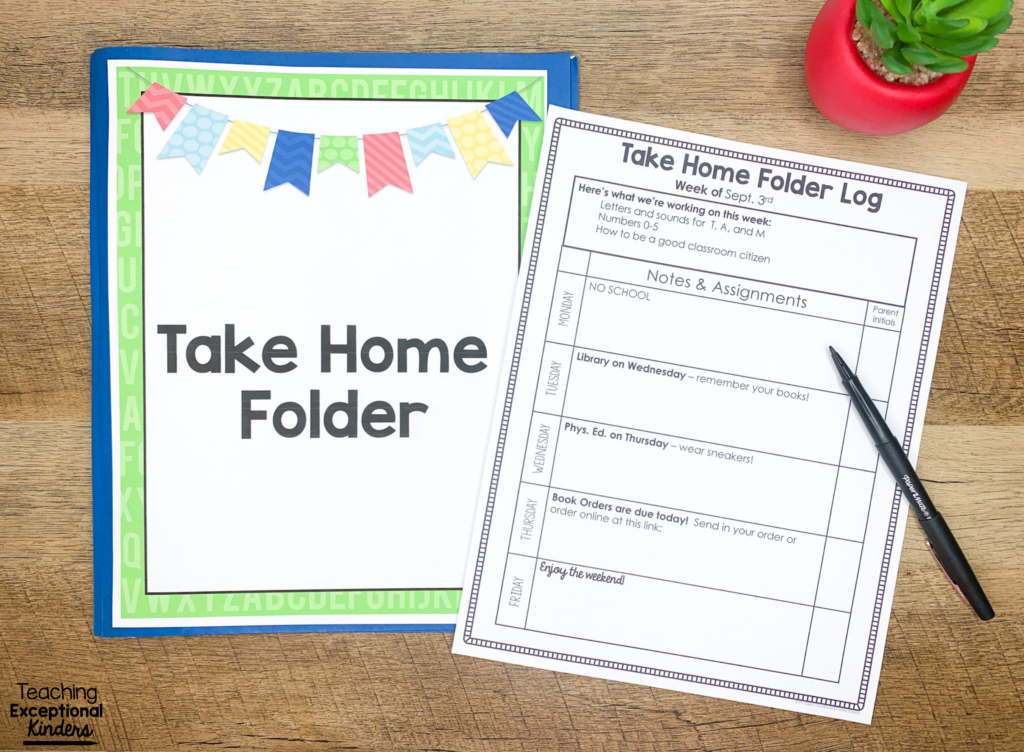
For example, if you are sending home daily communication folders, have them ready to go home on the first day of school. The longer you wait to initiate your system, the more difficult it will be for families to establish the habit of checking for information from you.
2. Make the First Contact Positive
You don’t want your first interaction with a parent to be about something negative. In order to prevent this from happening, make a positive phone call home for every student in your classroom within the first week of school or so. It's well worth the time investment to show families that you care about their student.
3. Use Print and Digital Communication
Digital communication tools like Seesaw have made it easier to streamline communication with families. Teachers can use these tools to help parents feel more involved in the day-to-day happenings of the classroom.
However, it’s important to use physical methods of communication in addition to apps. There are many situations in which family members don’t have easy access to the internet or devices with apps. By using both print and digital communication methods, you can ensure that all families can see what’s going on in school. Plus, you’ll have a record of the communication.
4. Consistently Communicate About Behavior
Balancing positive and constructive feedback about behavior is important all year long, not just in the first few weeks of school. It doesn’t take long for parents to establish a “no news is good news” view of communication from the school. This means that any time they see a letter in their child’s backpack or your email address in your inbox, they’ll automatically be bracing for bad news before they even see what you have to say! This doesn't set the tone for constructive communication.
It’s helpful for families to receive consistent feedback about what is going well at school as well as areas in which students can improve. Find a method for providing this feedback that will help you consistently communicate with families about behavior.
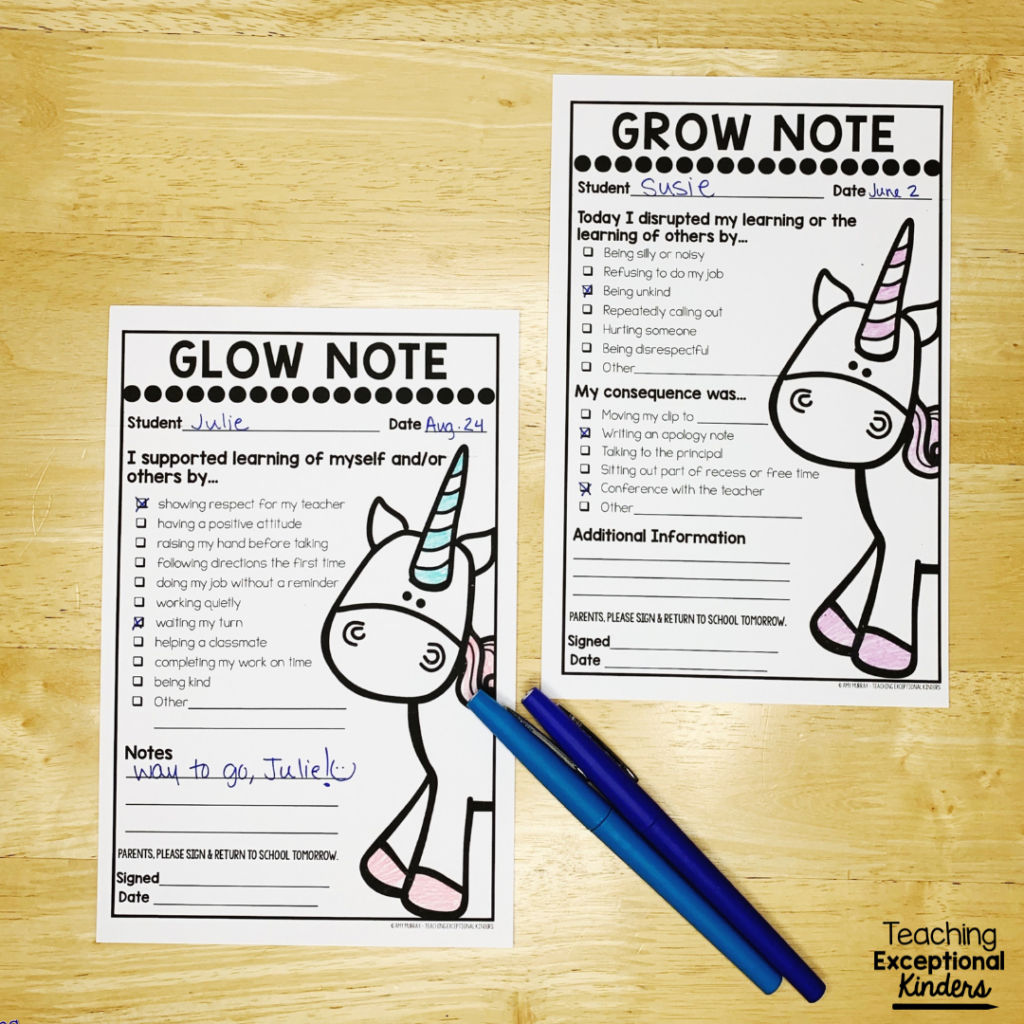
Glow and grow notes are my favorite tool for day-to-day communication about behavior. This one simple behavior management tool can make a huge difference in building relationships with parents. All you have to do is send one glow note and one grow home each day with one student. This simple form is easy to fill out each day, which ensures that you are regularly reaching out to families about behavior.
5. Have a Plan for Parent-Teacher Conferences
Parent-teacher conferences are a great time to support your growing relationships with parents and families. Make sure that you have a plan for a successful conference experience!
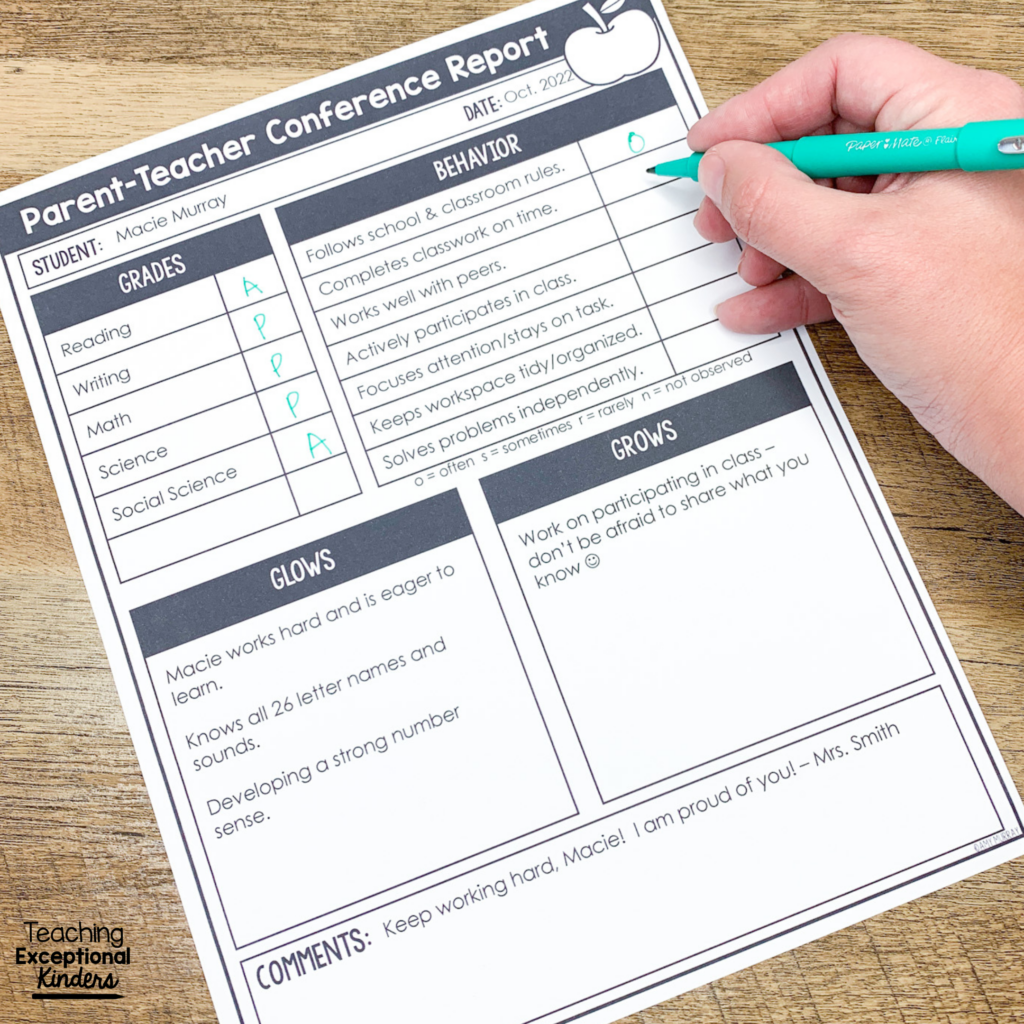
This begins with notifying parents of their conference time to make sure that they are able to attend. It’s also important to get parent feedback and make sure you address their concerns during your time together. A productive and informative conference experience can really help parents feel more involved and invested in what their child is doing at school.
6. Provide Tools for Practicing at Home
As teachers, we know how essential it is for students to apply what they are learning to their day-to-day lives. Practicing academic skills at home is a great way for students to do this! However, parents might not know where to start when it comes to practicing literacy or math skills at home.
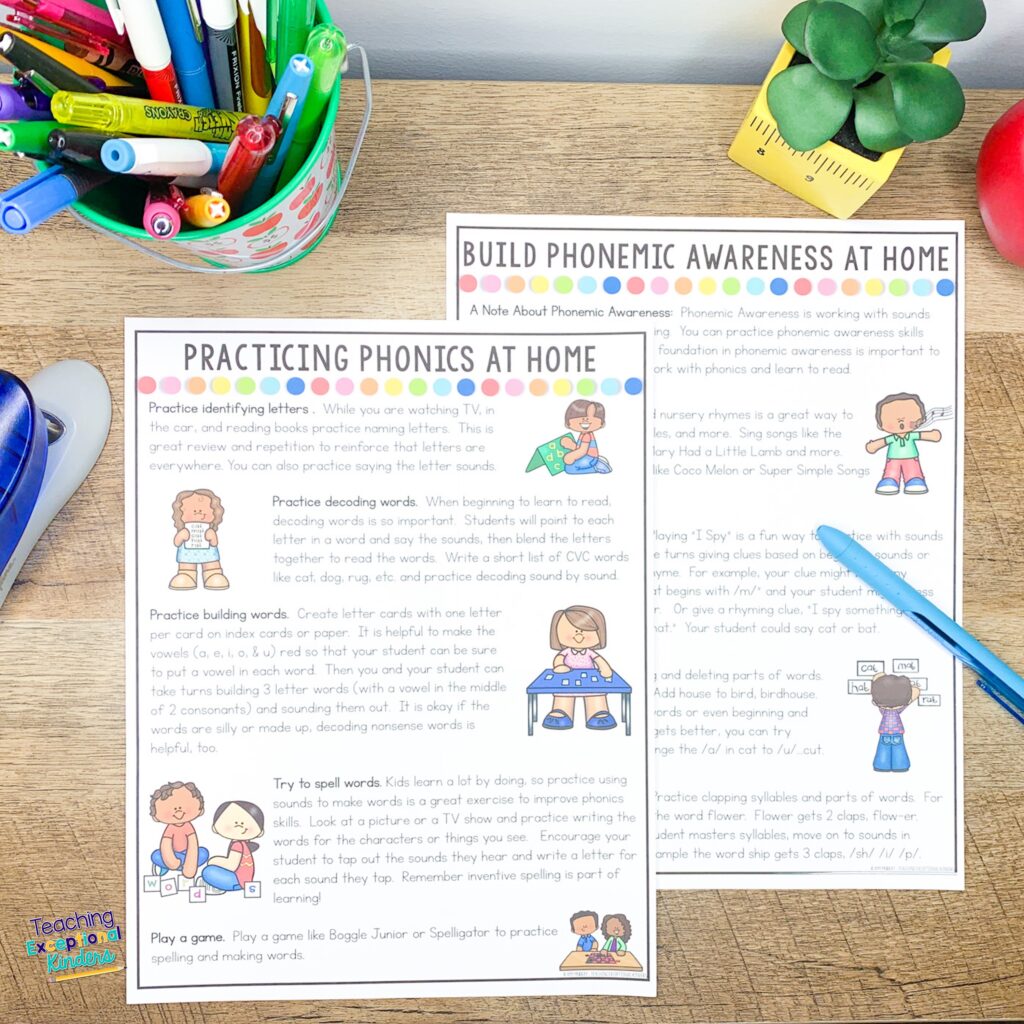
You can provide tools that give parents more confidence in helping their students practice academic concepts at home. These could include informative parent handouts that explain literacy concepts like phonemic awareness. Another tool could be a list of games and activities that are helpful for practicing skills at home. You could also provide log-in information so parents can access the same learning apps that students are using at school. There are many ways that you can encourage skill practice at home!
Printable Bundle of Parent Communication Tools
If you want to add more parent communication to your classroom this year, I have a resource that will save you major time! I’ve put together one easy-to-download bundle to help you implement these tips for parent-teacher communication! This bundle of communication tools comes with everything you need for building relationships with parents throughout the year. It includes back-to-school printables, glow and grow behavior notes, informational parent handouts, conference forms, and so much more! You can take a closer look at this resource in the Teaching Exceptional Kinders shop or on TPT.
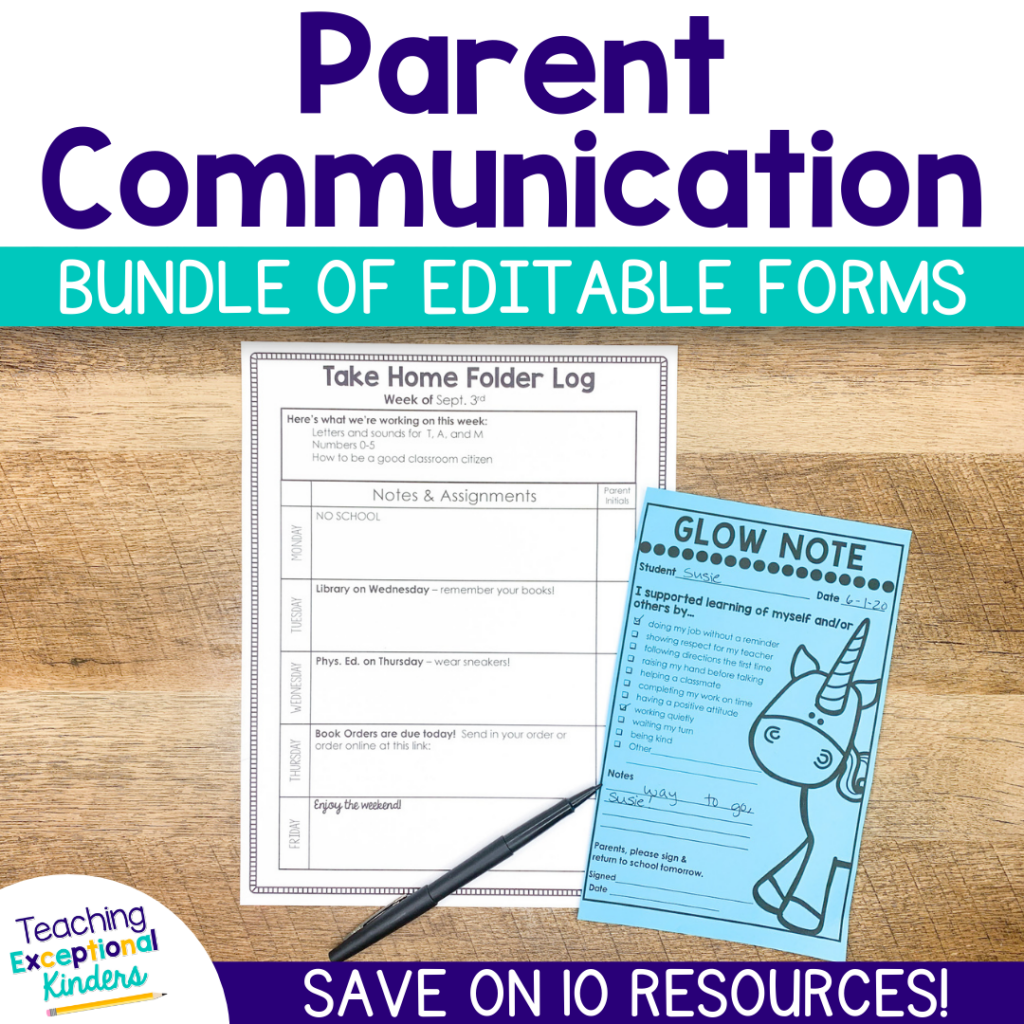
Save These Tips for Building Relationships with Parents
If you’d like to come back to this post, be sure to save it for later! Just add the pin below to your favorite teaching board on Pinterest. You’ll be able to quickly find these tips and resources for parent communication whenever you need them!

Amy
SITE DESIGN BY LAINE SUTHERLAND DESIGNS

